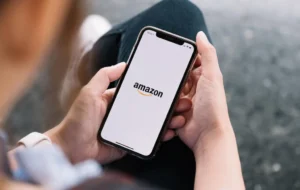Amazon Seller Central
Amazon makes it easy to enter the world of e-commerce through Seller Central — the third-party marketplace platform that is changing the way vendors do business online. Many established Amazon sellers are also being shifted to Seller Central, leading to significant changes that can boost profits — if the right strategy is used.

See how our PLG Methodology (the same process we use for Salesforce, Audible, and Care.com) produces extraordinary results that can be applied to grow your business.
Moving From 1P to 3P
Amazon has recently shifted its approach to vendors, moving away from it’s wholesale-retail model and dissolving many long-established vendor relationships. For Amazon sellers, this means adopting new strategies in order to transition toward using Amazon as a direct-to-consumer sales platform rather than a wholesale partner.
If your enterprise does $10 million or less in total annual sales volume on Amazon, you may have already been given notice that your standing purchase orders will not be renewed. It’s not personal — it’s simply a move by Amazon that provides the company with the ability to achieve even better profit margins.
Maximizing Opportunities on Seller Central
While the shift towards Amazon’s direct-to-consumer model may pose significant challenges for established wholesalers who have come to rely on bulk sales directly to Amazon, the move also provides a number of advantages for small to medium-sized businesses.
With Seller Central, businesses have greater control over their pricing while the removal of Amazon as the “middle man” means higher sales margins. The 3P model also enables direct consumer feedback and a shorter sales cycle that supports soft launches and product testing when compared to the 1P model, which leaves pricing control largely in Amazon’s hands.
Navigating the Challenges of Direct-To-Consumer Amazon Marketing
When compared to Amazon’s 1P model, optimizing sales on Seller Central requires additional resources, whether those are handled in-house, by another agency, or through Amazon’s own contracted fulfillment services. There is also the need for additional logistics management, and all Seller Central vendors are now responsible for their own advertising and product promotion through listing optimization, on-platform advertising, and branding.
Simply put, Amazon has opted to follow the lead of other major e-commerce marketplaces like eBay by offloading responsibilities — and control — onto Amazon sellers. Through Seller Central, sellers face stiff competition and new challenges along with greater potential for brand growth and bigger profits.












